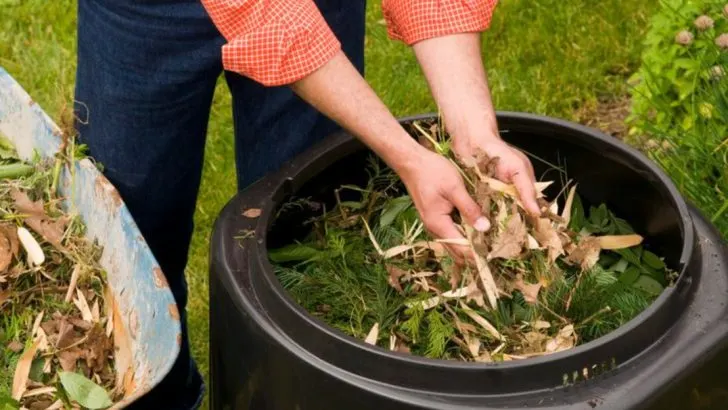The Amish have been growing abundant, healthy gardens for generations—without chemicals, high-tech tools, or store-bought shortcuts. Their methods may be old-fashioned, but they’re rooted in deep practicality, respect for nature, and a clear understanding of what really works.
In this article, you’ll discover 25 time-tested Amish gardening hacks that are surprisingly simple yet incredibly effective. From natural pest control to smart composting tricks and unusual companion planting combos, these tips could change the way you garden forever.
Sometimes, the best solutions aren’t new—they’re just forgotten.
Companion Planting Wisdom

The Amish have long understood the symbiosis of nature. Planting marigolds near tomatoes, for example, is a natural pest deterrent. This age-old wisdom creates a self-sustaining ecosystem where plants support each other’s growth. Employing this method can lead to healthier plants and richer harvests.
Think of it as a community of plants. Just as people thrive in supportive environments, so do plants. The right companions can repel pests and improve flavor.
Next time you plan your garden, consider pairing plants that benefit each other. It’s a simple concept with profound results.
Heirloom Seed Preservation
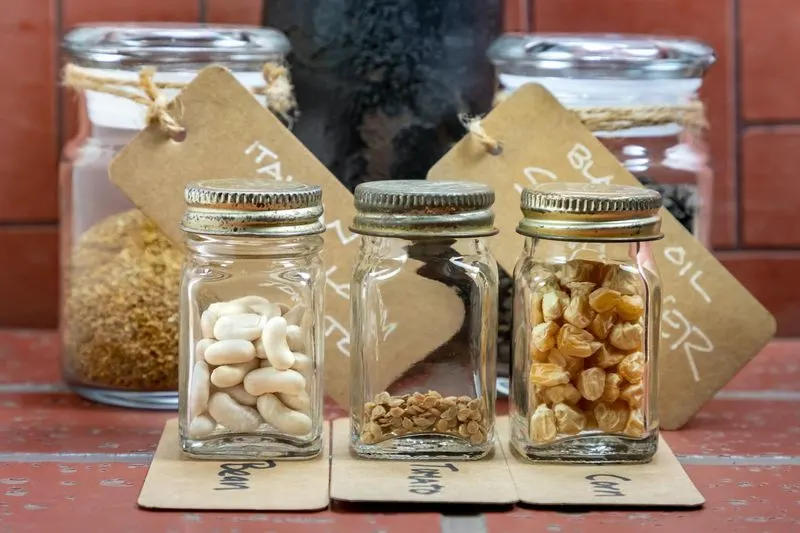
Keeping seeds from season to season is a hallmark of Amish gardening. By using heirloom seeds, they ensure the purity and resilience of their plants. This practice not only preserves history but guarantees a diverse gene pool for future generations.
Heirlooms provide more than just a harvest. They’re a link to the past, often resulting in unique flavors and hardier plants. Embrace this tradition to enjoy heirloom varieties in your garden.
Preserving seeds is a simple yet profound step toward sustainability. It ensures you’re growing plants adapted to your specific environment.
Composting Mastery
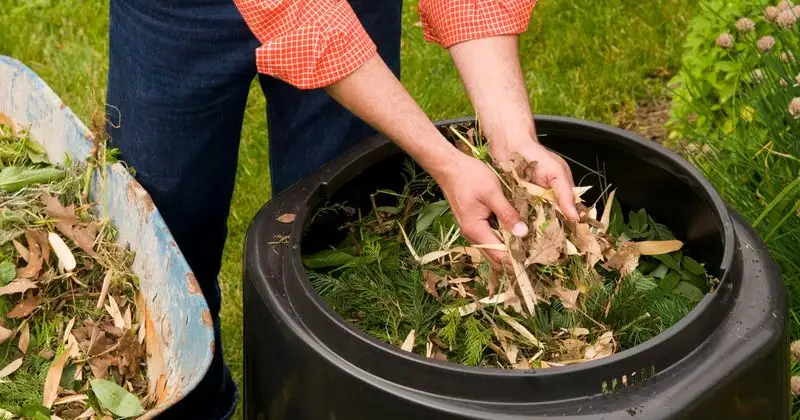
Amish farmers have mastered the art of composting, turning organic waste into nutrient-rich soil. Composting reduces waste and enhances the soil’s fertility, encouraging robust plant growth.
Their approach is straightforward: collect kitchen scraps, yard waste, and animal manure, and allow nature to do the rest. This balanced mix results in compost teeming with beneficial microbes.
Implementing a compost pile in your backyard mimics the natural recycling of nutrients found in forests. It’s a sustainable practice that enriches your garden over time.
Natural Pest Control
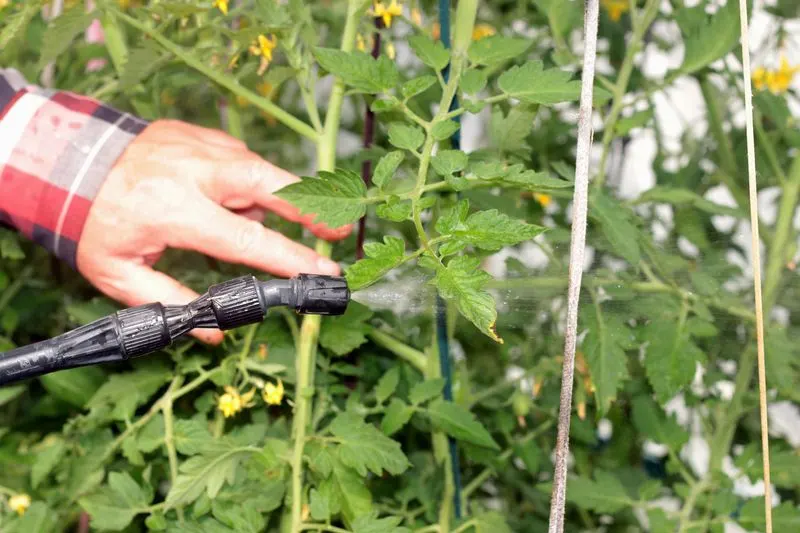
For the Amish, chemical pesticides have no place in the garden. Instead, they rely on natural solutions like neem oil, garlic sprays, and diatomaceous earth to ward off pests.
These methods protect the plants without harming beneficial insects or the environment. It’s a holistic approach to pest management, embracing natural predators and plant-based solutions.
Incorporating these techniques means fewer chemicals in your food and a healthier garden ecosystem. Plus, it reduces dependency on store-bought products, saving money.
Crop Rotation Insights
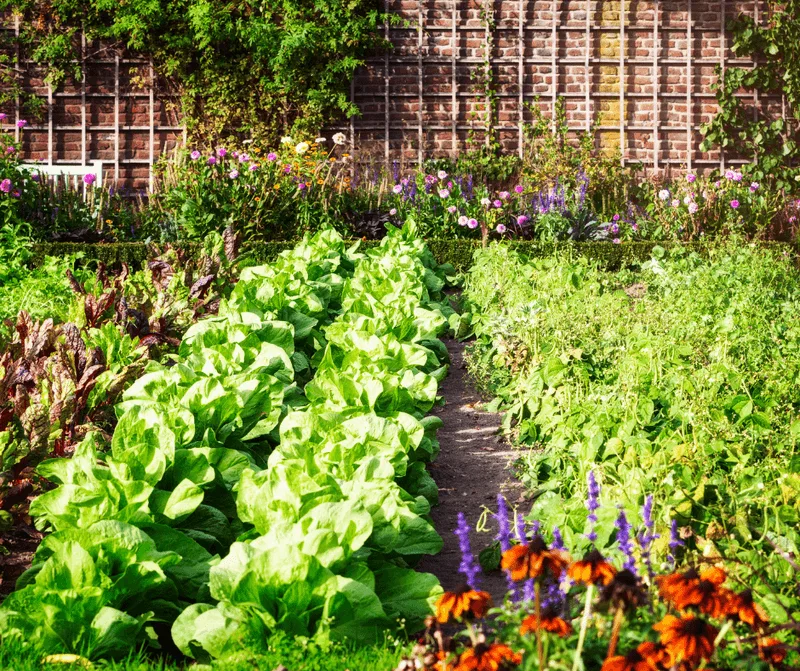
Rotating crops is a fundamental principle in Amish agriculture. By changing the location of crops each season, they prevent soil depletion and disrupt pest life cycles.
This practice ensures that the soil maintains its nutrients, reducing the need for artificial fertilizers. It also helps in breaking the cycle of crop-specific pests and diseases.
Adopting crop rotation in your garden can lead to healthier plants and increased yields. It’s a strategic approach that aligns with natural processes.
Hand Tool Craftsmanship
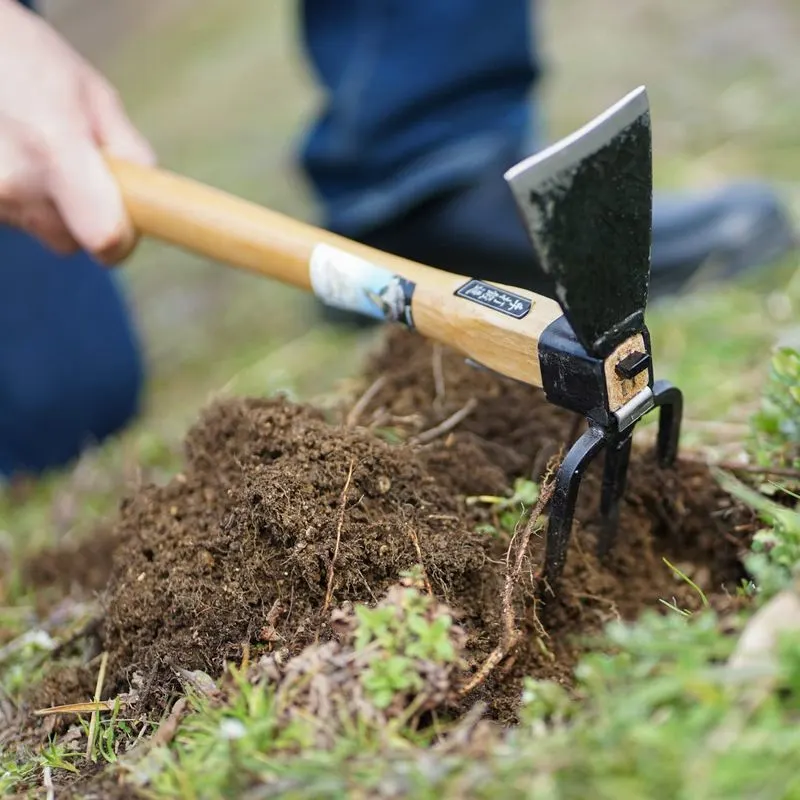
In a world of mechanized farming, the Amish hold a deep respect for hand tools. These tools are crafted for precision and durability, often passed down through generations.
Hand tools are not just about nostalgia; they offer control and care that machines can’t match. Using them connects gardeners to their plants in a more personal way.
The craftsmanship involved in making these tools ensures they last a lifetime, supporting sustainable practices in the garden. It’s a testament to the value of quality over convenience.
Mulching Techniques
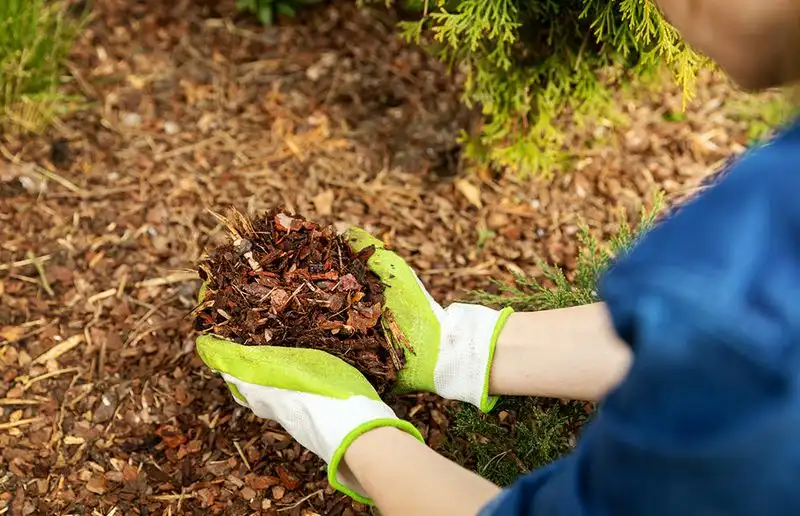
Mulching is an essential technique in Amish gardening. Utilizing straw, leaves, or wood chips, they cover the soil to retain moisture, suppress weeds, and regulate temperature.
This layer mimics the protective cover found in nature, allowing soil to thrive without harsh chemicals. Mulch also gradually decomposes, adding organic matter back into the soil.
By adopting these mulching techniques, you’ll create a healthier growing environment. It’s an effortless way to enhance your garden’s productivity and sustainability.
Raised Bed Gardening
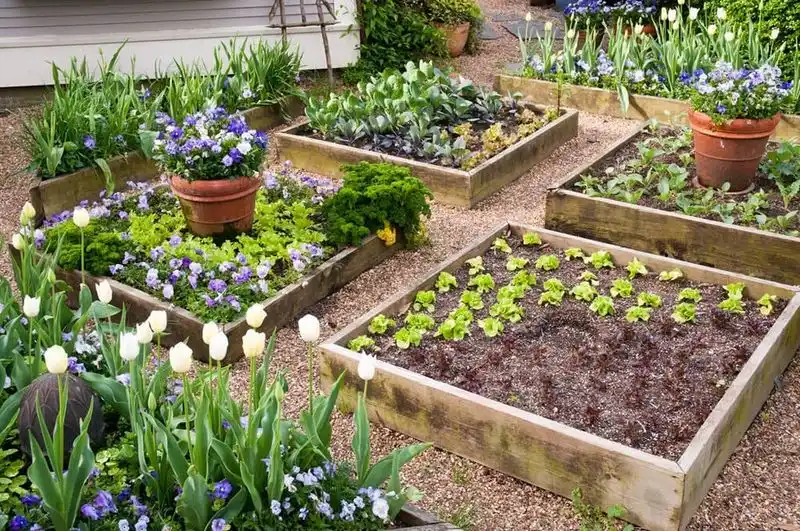
Raised beds are a staple in Amish gardens, offering improved drainage and soil quality. These beds warm up faster in spring, allowing for an extended growing season.
Constructed using locally-sourced wood, raised beds reflect the Amish commitment to sustainability. They provide a defined space for intensive planting, leading to higher yields.
By creating your own raised beds, you’re not just saving space; you’re optimizing your garden’s potential. It’s a smart solution for both urban and rural settings.
Seed Saving Traditions
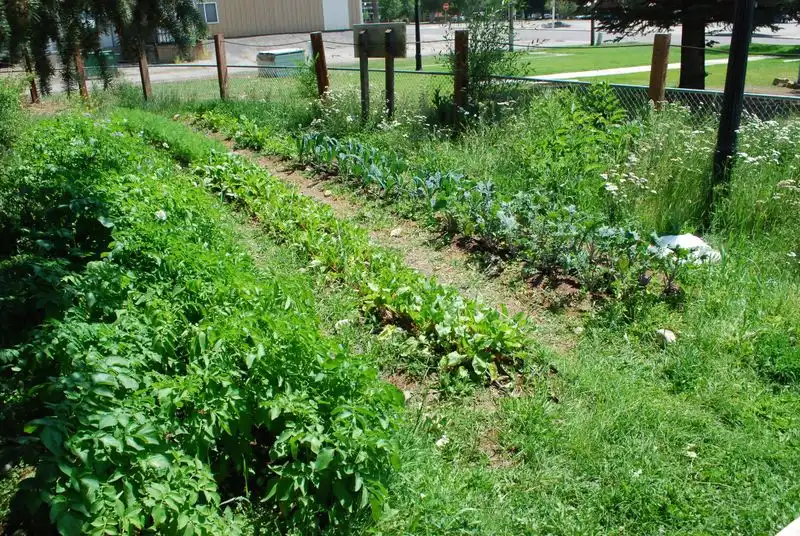
The age-old tradition of seed saving is a cornerstone of Amish gardening. By collecting seeds from their harvest, they ensure a continuous cycle of growth and adaptability in their gardens.
This practice preserves the genetic diversity of plants, fostering resilience against pests and diseases. Seed saving is both cost-effective and environmentally friendly.
Engaging in this tradition allows gardeners to become stewards of their plant varieties. It’s an empowering way to connect with nature on a deeper level.
Herbal Medicine Gardens
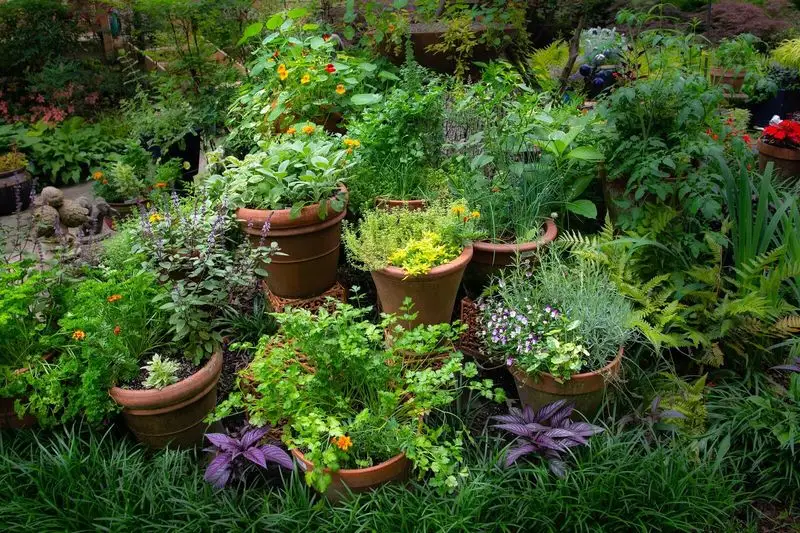
Amish gardens often include sections dedicated to medicinal herbs like chamomile, echinacea, and peppermint. These plants provide natural remedies for common ailments, reducing the need for pharmaceuticals.
Cultivating a herbal garden offers an alternative approach to health, connecting gardeners to the healing power of nature. The knowledge of these plants is passed through generations.
Starting your own herbal medicine garden is simple. It’s a rewarding way to enhance well-being and harness the therapeutic qualities of plants.
Water Conservation Techniques
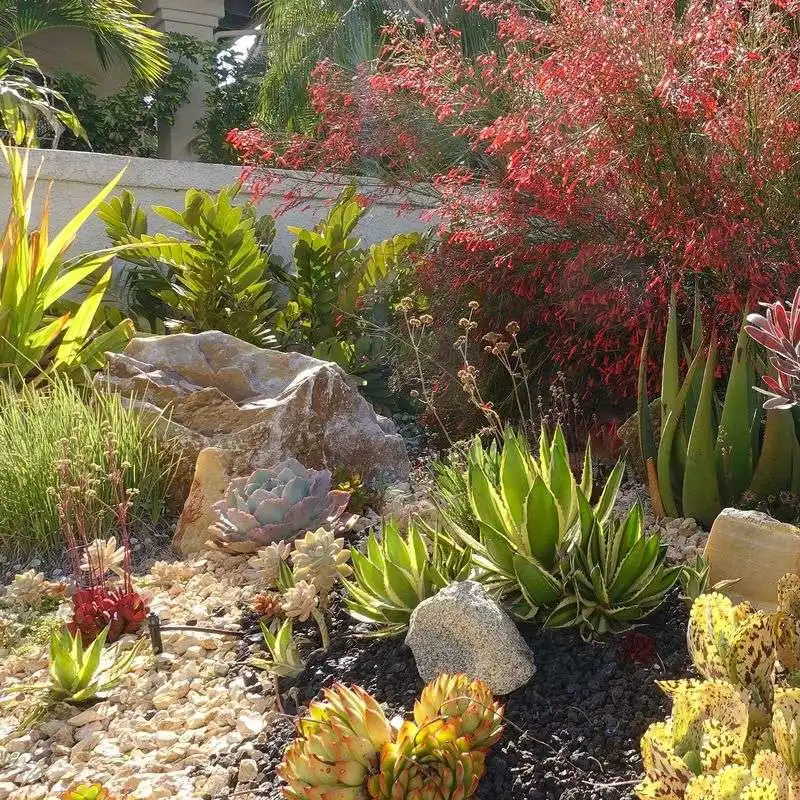
Water conservation is integral to Amish gardening. Techniques like rainwater harvesting and drip irrigation ensure efficient use of water resources.
This mindful approach reduces dependency on municipal water supplies and promotes sustainability. The Amish demonstrate that with careful planning, gardens can flourish with minimal water use.
Incorporating these techniques not only conserves water but also saves money. It’s a responsible way to nurture the environment and secure resources for future generations.
Natural Fertilizers
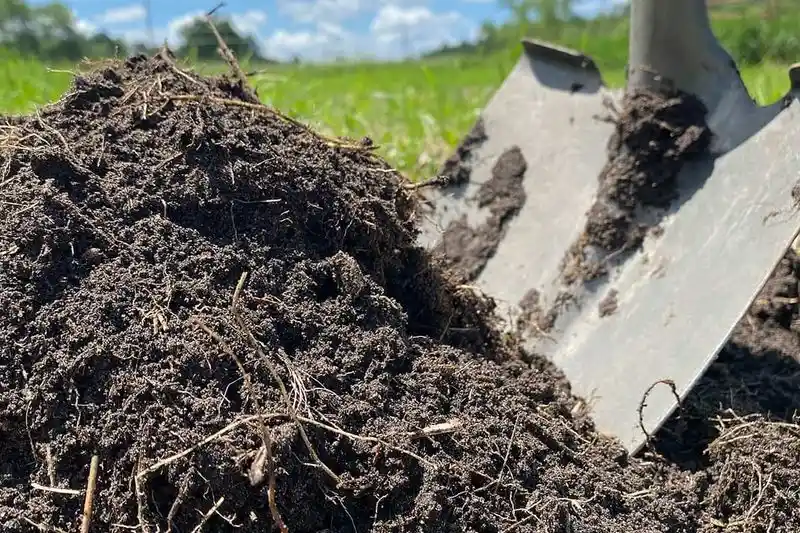
Instead of commercial fertilizers, the Amish rely on natural alternatives like compost and animal manure. These enrich the soil without the risk of chemical runoff.
This eco-friendly choice enhances soil structure and promotes microbial activity, leading to healthier plants. It’s a practice rooted in respect for the earth’s natural processes.
Using natural fertilizers creates a vibrant ecosystem in your garden. It’s a sustainable method that mirrors nature’s way of nurturing growth.
Garden Tool Maintenance
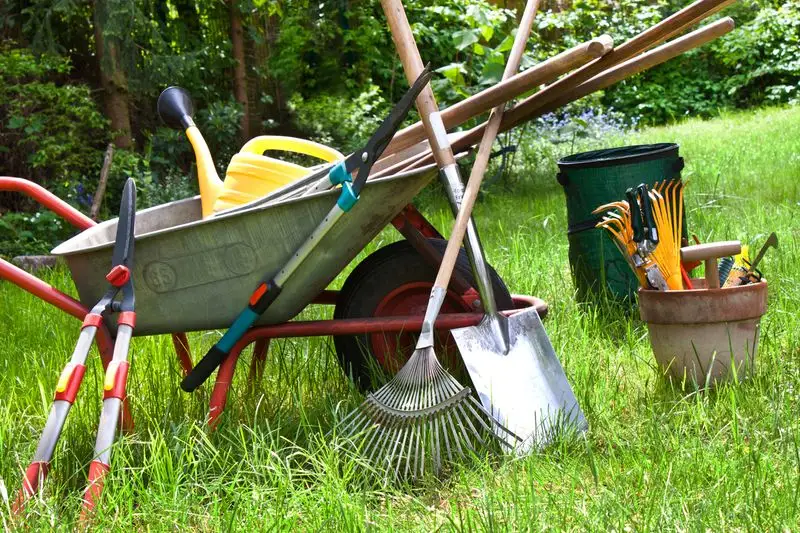
Amish gardeners place great importance on maintaining their tools. Regular cleaning, sharpening, and oiling extend the life of these essential implements.
Well-maintained tools ensure precise work and reduce effort, reflecting the Amish dedication to craftsmanship. This attention to detail preserves the functionality and efficiency of their tools.
Taking the time to care for your tools can make gardening more enjoyable. It’s a mindful practice that enhances the overall gardening experience.
Biodiversity Emphasis

Encouraging biodiversity is a core aspect of Amish gardening. By planting a wide variety of crops and flowers, they create habitats that attract beneficial insects and pollinators.
This diversity supports a balanced ecosystem, reducing pest outbreaks and enhancing plant health. It aligns with the Amish philosophy of living in harmony with nature.
By fostering biodiversity, you’re contributing to a robust garden ecosystem. It’s an enriching practice that benefits both plants and wildlife.
Seasonal Planting Guides
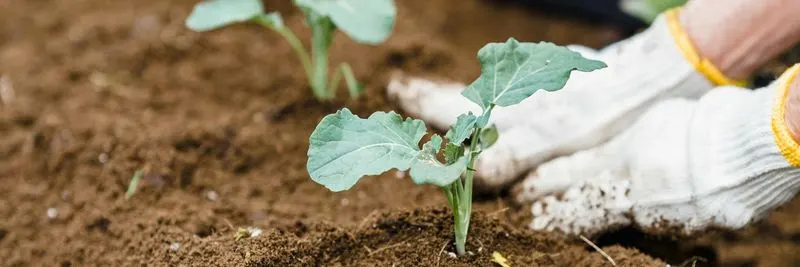
The Amish follow seasonal planting guides to optimize growth and yield. These guides are based on generations of observations and align planting with natural cycles.
Adhering to these schedules ensures that plants are sown at the most opportune times, maximizing their potential. It’s a harmonious way to work with nature’s rhythm.
Incorporating seasonal guides into your gardening routine can enhance productivity. It’s a strategic approach that takes into account local climate conditions.
Cold Frame Gardening
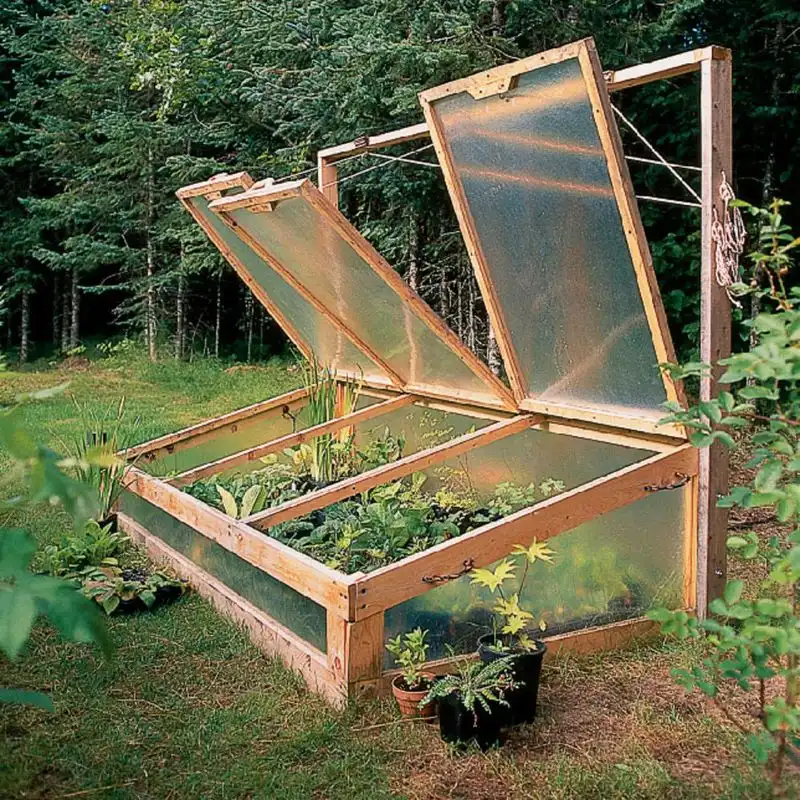
Cold frames are simple, effective structures used by the Amish to extend the growing season. These frames protect seedlings from frost, allowing for earlier planting.
Constructed from reclaimed materials, cold frames reflect the Amish commitment to resourcefulness. They provide a microclimate that nurtures young plants in adverse weather.
Building a cold frame is an excellent way to get a head start on the growing season. It’s an ingenious solution for all-season gardening.
Soil Health Monitoring

Keeping the soil healthy is a priority for the Amish. They regularly test soil quality and amend it with natural additives like lime and gypsum.
This practice ensures that the soil retains its fertility and supports plant growth. It’s a proactive way to address potential issues before they affect the crop.
Monitoring soil health in your garden is vital. It’s a preventive measure that leads to more productive and resilient plants.
Self-Sufficiency Practices
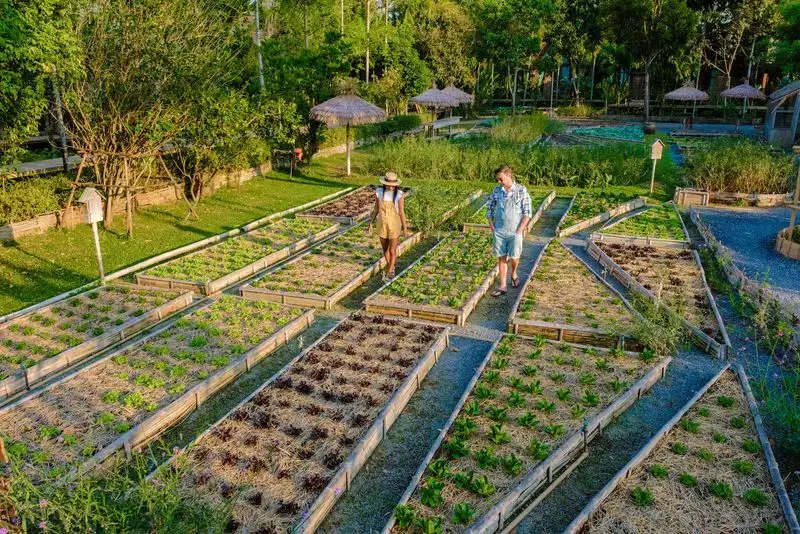
Self-sufficiency is at the heart of Amish gardening. They grow a large portion of their food, preserving the excess for the winter months.
This approach reduces reliance on commercial food sources and ensures a steady supply of fresh produce. It embodies the principles of sustainability and independence.
Adopting self-sufficiency practices in your garden can lead to a rewarding, self-reliant lifestyle. It’s a fulfilling way to connect with the food you eat.
Wildlife-Friendly Gardens

Creating wildlife-friendly gardens is a priority for the Amish. By incorporating birdhouses, bee boxes, and native plants, they support local wildlife.
This inclusive approach fosters a thriving ecosystem where animals and plants coexist. It’s a testament to the Amish ethos of stewardship over the land.
By making your garden wildlife-friendly, you encourage biodiversity and enrich your environment. It’s a step toward a healthier, more balanced garden.
Simple Irrigation Systems

The Amish use simple, effective irrigation systems to water their crops. Gravity-fed systems and rain barrels are common, providing water without electricity.
These systems reflect the Amish principles of simplicity and efficiency. They ensure that water is delivered directly to the roots, minimizing waste.
Implementing a simple irrigation system in your garden can save resources and improve plant health. It’s an environmentally-friendly way to manage watering needs.
Plant-Based Dye Gardens
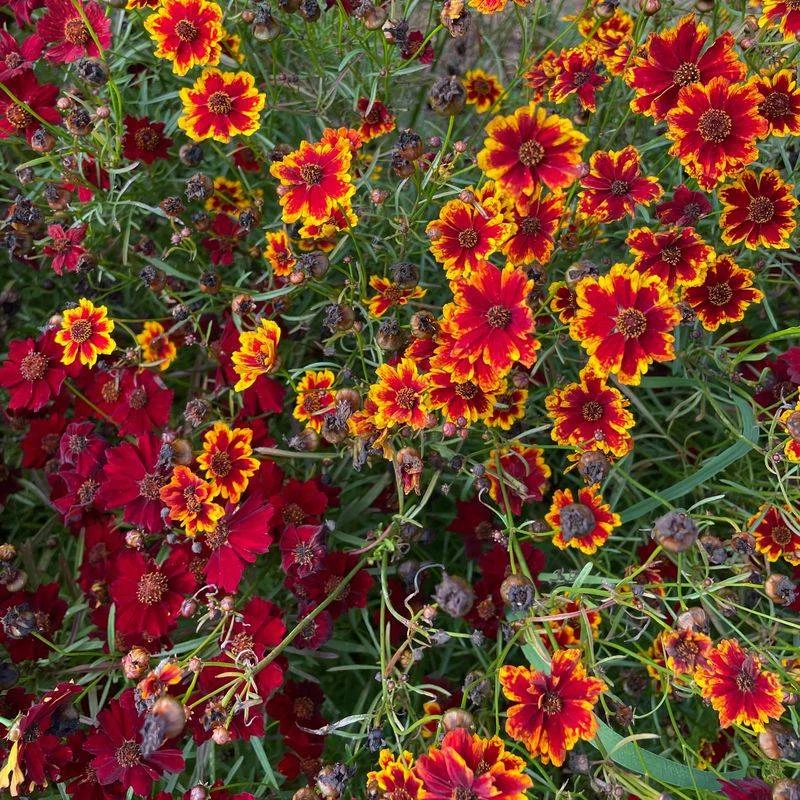
Plant-based dyes are a tradition in Amish culture, using flowers and leaves to create vibrant colors. Dye plants like indigo and marigold offer an eco-friendly alternative to synthetic dyes.
Growing your own dye garden allows you to explore a creative aspect of gardening. It’s a unique way to connect with nature’s palette.
By cultivating a dye garden, you can produce natural colors for textiles and crafts. It’s a creative, sustainable practice that celebrates natural beauty.
Canning and Preservation
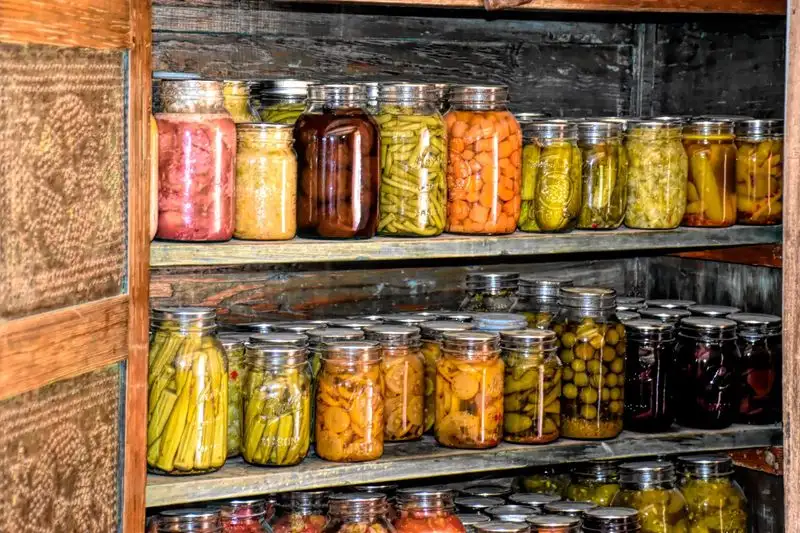
Canning and preservation are essential skills passed down in Amish communities. This method extends the shelf life of produce, ensuring food availability throughout winter.
Preserving fruits and vegetables captures their peak flavor and nutritional value. It’s a practical way to manage harvest surplus and minimize waste.
Learning to can and preserve your garden’s bounty is a rewarding skill. It offers independence from store-bought goods and celebrates the fruits of your labor.
Quiet Reflection Spaces

Amish gardens often include spaces for quiet reflection, providing a peaceful haven amidst the bustle of daily life. These areas are designed to foster tranquility and connection to nature.
Incorporating a reflection space in your garden allows for moments of mindfulness and relaxation. It’s a place to pause and appreciate the beauty around you.
Creating such a space encourages a deeper relationship with the environment. It’s an invitation to unwind and reflect in the calming embrace of nature.

